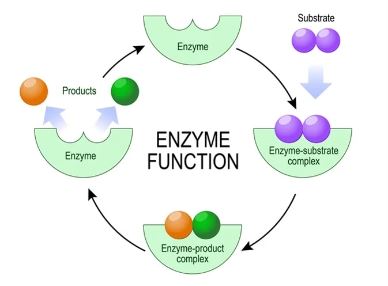Introduction
Milk has various Minor components and micronutrients of Milk, also possesses the high health benefits, in this article we are going to disccused all this Minor components and micronutrients of Milk.
Minerals- Micronutrients of milk
Calcium:
Calcium functions in the mineralization of bones and teeth, muscle contraction and relaxation, nerve functioning, and blood clotting.
Iron:
Iron carries oxygen as a part of hemoglobin in blood or myoglobin in muscles, and it is required for cellular energy metabolism.
Magnesium:
Magnesium is a factor involved in bone mineralization, the building of protein, enzyme action, normal muscular function, transmission of nerve impulses, proper immune function and maintenance of teeth.
Phosphorus:
Phosphorus is involved with mineralization of bones and teeth, it is important in genetic material, in cell membranes as phospholipids, in energy transfer, and in buffering systems.
Potassium:
Potassium facilitates reactions, including the making of protein. It is involved in the maintenance of fluid and electrolyte balance, the support of cell integrity, the transmission of nerve impulses, and the contraction of
muscles, including the heart.
Sodium:
Sodium, sodium chloride, and potassium (the electrolytes) maintain normal fluid balance in the body. Sodium is critical to nerve impulse
transmission.
Vitamins
Fat Soluble Vitamins
Vitamins A, D, and E
Water Soluble Vitamins
Vitamins C, B1, B2, B6, B12, pantothenic acid,
niacin, biotin, and folic acid
Vitamins A, D, E, C, B1, B2, B6, B12, pantothenic acid, niacin, biotin, and folic acid are all found in milk.
The concentrations of fat soluble vitamins in milk (A, D, and E) are dependent on the diet and the breed of the cow.
All of the vitamins in milk are affected by processing. Vitamins C, B2, and A are deteriorated by light. The fat soluble vitamins are stable to heat, but the water soluble vitamins, B1, B6, B12, and folic acid, are less stable to heat.
UHT sterilization leads to a 20-30% loss of vitamin activity and sterilization leads to 50% loss of vitamin activity.
Functions of Vitamins in Milk
Vitamin A: Vitamin A prevents eye problems, promotes a healthy immune system, is essential for the growth and development of cells, mucous membranes, skin, bone and tooth health, reproduction, and immunity.
Vitamin D: Vitamin D strengthens bones because it helps the body absorb bone-building calcium.
Vitamin E: Vitamin E is an antioxidant and helps protect cells from damage. It functions in stabilization of cell
membranes, support of immune function, protection of polyunsaturated fatty acids, and normal nerve development.
Vitamin C (also called ascorbic acid): Vitamin C is needed to form collagen, a tissue that helps to hold cells together. It is an antioxidant, is restores vitamin E to its active form, it helps to synthesize hormones, it supports immune cell function, and helps in absorption of iron.
Thiamin (also called vitamin B1): Thiamin is part of a coenzyme needed in energy metabolism. It also supports a normal appetite and nervous system function.
Riboflavin (also called vitamin B2): Riboflavin is part of a coenzyme needed in energy metabolism. It also supports normal vision and skin health.
Vitamin B6 (also called pyridoxine): Vitamin B6 is part of a coenzyme needed in amino acid and fatty acid
metabolism. It helps to convert tryptophan to niacin and to serotonin, and it helps make red blood cells.
Vitamin B12: Vitamin B12 is part of coenzymes needed to make red blood cells, and it is important for nerve cell function.
Folate (also known as vitamin B9, folic acid, or folacin): Folate is part of a coenzyme needed for synthesis of red blood cells. It is also needed to make DNA.
Niacin (also called vitamin B3): Part of coenzymes needed in energy metabolism. It helps maintain healthy skin and is important for nerve function.
Pantothenic Acid: Part of a coenzyme needed in energy metabolism.
Biotin: A cofactor for several enzymes needed in energy metabolism, fat synthesis, amino acid metabolism, and
glycogen synthesis.
Micronutrients
Non-Protein Nitrogen
1. Nucleotides
2. Urea
3. Free amino acids
Enzymes

1. Lipoprotein lipase
2. Lactoperoxidase
3.Xanthine oxidase
4. Alkaline phosphatase
Urea is responsible for almost all of the seasonal variation in the heat stability of milk. The concentration of milk urea is controlled by the level of urea in the blood, which is directly related to diet.
Lipoprotein lipase catalyzes the hydrolysis of triglycerides to free fatty acid. This reaction causes dairy products to have soapy, bitter, rancid, and unclean flavors. A great deal of lipoprotein lipase is present in freshly drawn milk, and under certain conditions, will spoil the milk within a few minutes.
The fat globule membrane acts as a physical barrier to lipase, and it is also readily inactivated by heat. Spontaneous lipolysis is influenced by stage of lactation, season, and diet.
Lactoperoxidase is another enzyme in milk present at high concentrations. It catalyzes the oxidation of unsaturated fatty acids leading to the development of oxidized flavors.
However, if thiocyanate and peroxide are supplemented in milk, lactoperoxidase acts as a powerful bacteriocide that can kill coliforms, Salmonellae, Shingellae, and Pseudomonads.
This process has been widely used for short-term preservation of milk in developing countries where
refrigeration is scarce.
Xanthine oxidase is also present in milk and can catalyze non-specific oxidation of dairy products. Other that that, its overall significance is low.
Alkaline phosphatase is almost completely inactivated by pasteurization, and it is therefore used as an index of the efficiency of such heat treatments.

